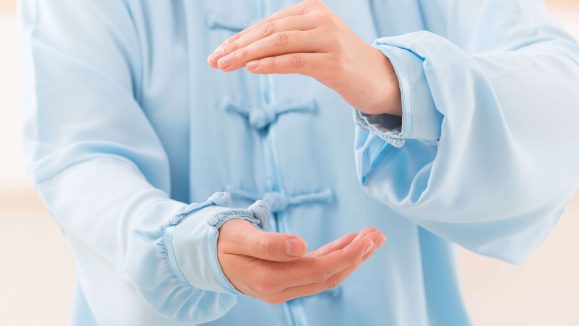The worst part of any feast is knowing that your wonderful evening will inevitably end, leaving you with mere memories of the delicious food you’ve had. It’s a terribly bad feeling, perhaps only matched by how the Media MICE team feels as the last day of our coverage on an ophthalmology conference comes to an end. While feasts wrap up with a dessert course, sweet and sinful just like New Orleans, we’re going to serve up another fabulous course of scientific content from Day 3 of the American Academy of Ophthalmology’s (AAO 2021) annual meeting.
The day started with sessions that covered a number of aspects in ophthalmology, some of which we hadn’t seen covered in detail at any other events this year. Commit to Compassionate Care: How Diversity, Equity and Inclusion (DEI) Elevates Your Practice was an interesting symposium, which covered some of the “hottest” topics in common public discourse. The main thrust of this session was that “a diverse and inclusive practice environment is associated with better financial performance and a higher quality of patient care.” Diversity is, of course, a sensitive topic in some quarters, but understanding how to argue for its real-world benefits was interesting to watch.
All That Matters About Macula
A less controversial topic, or perhaps a more common one, is macular edema. Current Pharmacologic and Surgical Treatment of the Macular Edemas offers a highly visual insight into this condition, where speakers highlighted the role of careful clinical evaluation and imaging technologies to identify the mechanisms that cause macular edema. This session is a must-watch on demand for those that want to brush up on their knowledge or learn something new about macular edema, or just enjoy some cool visuals.
Yesterday we covered how clinicians can best react when confronted by patients unhappy with their multifocal lens implants. But how do you handle the worst possible complications arising from oculofacial plastic surgery? It’s something of a doozy, which was what made Nightmares in Oculofacial Plastic Surgery: Managing Your Worst Complications such an interesting session for the Media MICE team. The organizers point out that complications will always happen, no matter how well one can prepare, so learning from the nightmarish and catastrophic failures is of the utmost importance.
Did you want to learn more about when a ptosis correction could go wrong? Then this session has you covered. Need to investigate what can happen when an ectropion repair becomes rather costly, or what you should do if you cut just a little too deeply on a patient’s cornea? Then make sure to check out this session which, according to the AAO’s virtual platform, should be available for on-demand viewing.
Hypertension in the Membrane
Hypertension is an interesting topic to one of the Media MICE team as, while studying at a certain university in Chicago, he was diagnosed with stress-related high blood pressure. He got it under control and the subject is now rather fascinating to him, which made the poster Optic Nerve Sheath Diameter Asymmetry in Patients With Intracranial Hypertension particularly appealing to investigate. Led by Dr. Nicola Rosa from the University of Salerno, Italy, the research examined intraocular optic nerve sheath diameter (ONSD) symmetry in patients with intracranial hypertension (IH) utilizing standardized A-scan ultrasonography.
The researchers examined 62 eyes of 31 subjects who showed ONSD asymmetry (0.63 ± 0.49 mm), with a prevalence of 84%. The median asymmetry was 0.51mm. Mean right eye ONSD was 5.22 ± 0.72 mm, mean left eye ONSD was 5.29 ± 0.80 mm (p = .552), and mean binocular and maximum ONSD measurements were 5.26 and 6.7mm, respectively. Dr. Rosa and her colleagues concluded that intraocular ONSD asymmetry does in fact occur in patients with IH.
Telehealth: Terrific or Trouble?
Now for a real blast from the past — because if you cast your mind back to early and mid-2020 you may remember the buzz around telehealth, and how it promised to revolutionize patient treatment. That development remains ongoing even if it gets less coverage at conferences, so we were fascinated to read Validation of a Standardized Home VA Test for Teleophthalmology in the poster section. Carried out by a large group of researchers at Vanderbilt University (Nashville, Tennessee), the poster investigated the validity of a self-administered Early Treatment Diabetic Retinopathy Study (ETDRS) home visual acuity (VA) test for teleophthalmology use.
All in all, 209 eyes from 108 patients participated and patients completed a home VA test with a print-out ETDRS chart. Then VAs were then measured in a clinic by an ophthalmic technician using a standard ETDRS chart. The results were that the mean adjusted VA letter score difference was 4.1 letters (90% CI, 3.2-4.9), well within the seven-letter equivalence margin, and the absolute VA score difference was 5.2 letters (90% CI, 4.6-5.9). Ninety-eight percent of patients agreed that the home test was easy to perform, and the poster’s authors concluded that an ETDRS VA test self-administered at home following a standardized protocol was equivalent to a standard technician-administered VA test in a clinic in the examined population. Kudos!
So, that was Day 3 of our coverage of AAO in the Big Easy. But we can reassure you there’s nothing easy about bringing together all the amazing ophthalmological content we’ve consumed the last couple of days, so our figurative hats are off to the organizers. The year is drawing to a close and it may be a while until the next conference of similar ambition, but you can bet your bottom dollar that we’ll be there. In the meantime stay classy and remain sassy. Adieu!
Editor’s Note: Check out our coverage of AAO 2021 Day 1 and Day 2 on cakemagazine.org.




